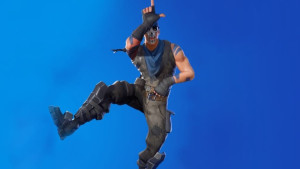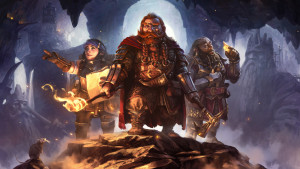Please support Game Informer. Print magazine subscriptions are less than $2 per issue
Ant Simulator Business Partners Respond, Dev's Claims '100 Percent Bull****'

As with most stories, there are multiple perspectives. Such is the case with Ant Simulator and allegedly embezzled funds. Earlier today, a video made the rounds, with developer Eric Tereshinski claiming his former friends and business partners' theft led him to cancel his game.
I spoke tonight with Tereshinski’s ETeeski LLC business partners, Tyler Monce and Devon Staley. It’s been a long day of accusations for them. The two have been painted as the villains in a story about an indie developer’s supposed realization that he was swindled.
When I spoke with Monce and Staley, the two opened up about their work at ETeeski, the allegations, and their side of the convoluted story. “We created the company with Eric,” Monce says. “We didn’t sign on. Because of our size, we had to be jacks of all trades. We handled a big number of things.”
During the 20 months the pair were part of the company, Monce and Staley say they invested a combined $5,000. They told me that was more than Tereshinski put into the firm. The company also had one other significantly smaller investment from one of Tereshinski’s friends.
The duo flatly deny their former partner’s claims. “It’s completely false,” Monce says. “I don’t know why he’s painting that picture, but the reality is that anything that was spent in a bar or restaurant was very reasonable in nature when you look at any business, including video game companies. It was part of our operating budget, it’s not anything that was excessive. It was all reported to the IRS. The picture he’s painting about that is 100 percent bull****.”
Monce, who served as ETeeski’s director of finance, says that the books were open. According to him there was no opportunity for clandestine embezzlement, because Tereshinski had access to all the financial data.
According to the pair, things were going well until November 2015. Shortly after Thanksgiving, Tereshinski made the decision to cut ties with the rest of the company. In doing so, he allegedly made the unilateral decision to close the firm’s business accounts.
“He took control of everything,” Monce continued. “He took control of not only all the company’s physical property, our bank accounts, our social media accounts, our website (which he changed to just our faces for some unknown reason), that was all him. This all started to take place right after the game started to get really popular late in the summer. My personal theory is that he wanted to take it all for himself and cut us out of it. We made it clear that we weren’t going to let him do that, because we had a moral and legal right not to."
According to Monce and Staley, Tereshinski moved the company’s funds to a personal account. That money was being used to support the development of the game, which the pair tell me included nine or ten independent contractors.
“The important thing to realize is that the ETeeski team wasn’t just us three,” Staley, who was the company’s director of operations, says. “We had a lot of contractors. Nine or ten people who worked on this game. Models, Rigging, our environmental art, and our human art, were all done through contractors.”
“We paid all those contractors, as well,” Monce added. “He’s making this claim that we spent all this money on expensive entertainment, and that’s completely false. We paid all these people who worked for us.”
Monce and Staley say they helped coordinate the team, which also included coding assistance. In the videos, including the one circulating today, there is no mention of external development support. The duo suggest that those individuals responsible for a variety of art and coding duties were all paid up front.
“We were very clear when we were making this game that we were going to pay our contractors up front,” Staley said. “It was a challenge for us that we could find contractors that we could pay. We’re not a big studio, we didn’t have a huge budget. But we wanted to make sure people got paid and not just a promise. That was a key aspect of our business to pay people.”
I inquired about an allegation Tereshinski made when speaking with Polygon today. In that interview, he indicates that Monce and Staley torpedoed a chance at PlayStation 4 development hardware. The pair tell a different story.
Monce says he joined Tereshinski at GDC in March 2015. The duo visited the Sony development booth and got information on what they needed to secure a development kit. This supposedly includes a static IP address and a dedicated internet line.
The company spent more than $1,000 getting that set up, as Tereshinski was working out of his house. The pair say the pieces were in place to move forward with Sony.
“We had everything ready to go,” Monce says. “All we needed from Eric was a playable demo. He was not able to deliver a playable demo. I spent a month right after GDC getting ready for that. That’s a big part of where our financial resources went to. All the infrastructure was in place and all we needed was a playable demo. It looks fantastic, because of all the great modelers and artists and stuff. But gameplay itself was taking a lot of time to get off. If you show it in a YouTube video, it looks fantastic. But if you play the game, there’s only three or four minutes of actual gameplay before you run out of things to do.”
The pair tell me that they are planning to pursue legal action against Tereshinski. However, because of possible litigation, were uncomfortable sharing the LLC documentation with me. For now, they are just trying to get their side of the story out.
“I think he wanted to create this outlandish story, grab headlines, and make us look terrible,” Monce says. “So far, it’s working for him.”
We continue to wait for a response from Tereshinski on our inquiries. We’ll update again should he respond.










